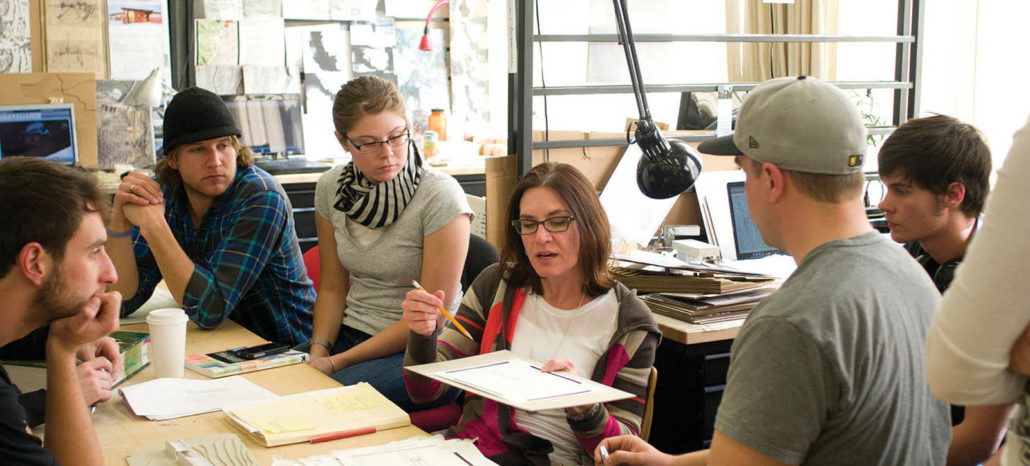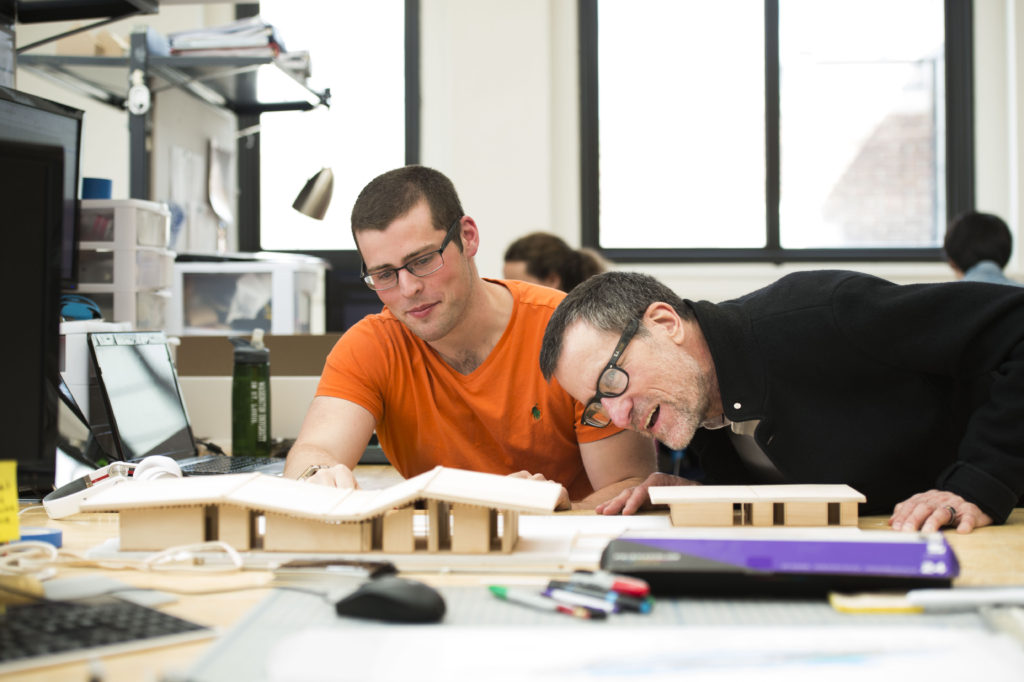[GRAD APP] Part III: Identifying Faculty Advisors
Now that you have identified your interests and the programs that best matches them, it’s time to get down to the deeper level of research—who will be advising you in Grad School? Identifying faculty advisors is one of the most important steps for a graduate student. Advisors are your connection to thoughtful discussions, critiques, resources, references, and more. While researching schools, it’s important to know who teaches there and how their research drives the curriculum. In a recent poll, over 50 percent of architecture graduate students stated that ‘faculty’ was one of the chief reasons they chose their program.
Qualities of a good advisor
- Active – find out where they will be teaching over the next few years. Professors, especially adjunct, change positions frequently and may not still be at the same university when start your studies. When doing your research, reach out to specific faculty to ask them what their long term goals are.
- Responsive – Faculty are busy… and we mean busy. They are usually juggling personal projects, community projects, publishing opportunities, on top of the demanding departmental responsibilities. Sometimes, they just can’t get back to you immediately. That is ok. But part of “advising” is to help guide you through your research. Be respectful and straight to the point with your communications. Respect goes a long way in this type of relationship.
- Involved – Whether that means attending conferences, writing books, leading community projects, or traveling the globe, it’s good to have an advisor who is actively involved in the world around them and their own growth and development.

Montana State Faculty with Students
What are they researching?
If you are interested in pursuing graduate research on a particular subject, an advisor with knowledge or work experience in that area will benefit you down the road. For example, one student we talked to was interested in urban infrastructure, landscape urbanism, and adaptive building techniques to respond to climate change. She ended up choosing three advisors that were well versed in each of those interests and that she knew she would be helpful in her thesis project.
Resources to find out more about a professor’s research area
Index of Scholarship by the Association of Collegiate Schools of Architecture (ACSA)
- The Index of Scholarship is an extensive database of research happening at architectural institutions across north america and beyond. For prospective students, the Index will be a visual resource that can be referenced when deciding where to apply. Slated for release on December 16th, 2016.
ACSA Programs
- Conferences
http://apps.acsa-arch.org/resources/proceedings/indexsearch.aspx - Competitions http://www.acsa-arch.org/publications/bookstores/bookstore/competition-summaries
- Awards
http://www.acsa-arch.org/publications/bookstores/bookstore/award-summaries
Journal of Architectural Education
- http://www.jaeonline.org
- Search on JSTOR.org
Other Peer-Reviwed Journals
Academia.edu
- Search the Professor’s name
Schools websites
- Check out where they are teaching
- Download their CV
Archinect – Find the School’s Blog
Are your potential advisors Adjunct vs Full-time Professors?
There are benefits of having each type of advisor on your committee. Adjunct professors are often practicing designers who bring a current perspective on what is happening in architectural practice. Full-time professors are usually more involved in shaping the curriculum and spending time on campus.

Dean Bruce Lindsey with students in architecture class taught by professor Stephen Leet.
Photos by Joe Angeles/WUSTL Photos
Meet them!
While it’s not always possible, if you can, meeting professors is a great opportunity to get to know what they are doing and how they are involved in the program. While this number varies from school to school, Tenured Professors are required to participate in around 40% Teaching, 40% Research and Creative Activities, and 20% Service and Outreach Activities. Professors seeking Tenure are considered “tenure-track,” which means that they are likely doing all of these activities intensely, with the goal of promotion. They are going to be busy.
When you schedule a tour of the school, see if the professor that you are interested in selecting as your advisor is available for coffee or a quick office visit. Be courteous and make sure to give them proper advance notice. (We suggest as soon as you know you are visiting.)
Follow them on Social Media!
Twitter is a great way to learn about what someone cares about and their networks. Many times, professors will tweet about their research or some community work they are doing. Follow along to stay informed.
Check back next week to learn more about how to “Get Paid!”




